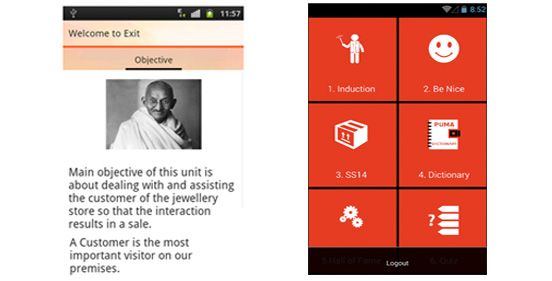
Voice recognition is a part of multiple apps these days. We can now command orders to our phones just by speaking and the task would be done. It can type and send out texts, find out GPS locations, play music, set alarms and appointments and even answer phone calls. The reasons for having voice-based commands in mobile applications can be plenty. To begin with, it can be as basic as having a small smartphone with a not-so-great touchpad, in turn posing as an inconvenience for the user. Speech orders through smartphones make our lives easier and faster in innumerable ways. With speech being a part of our mobile apps we can carry out a lot of tasks on the move easily. A voice-based mobile app can for example read out messages and let the user know who is calling while the person is driving or is not being able to use the phone manually.
The speech technology is basically divided into two major types. One being the ‘Text to Speech’ (TTS) and the other being the speech recognition technology In the TTS method apps can read out the text message, appointment details and the like. In short anything in text format can be communicated to the user through audio or speech. On the other hand, through the second method voice based apps would allow users to talk to the app and carry out/send commands without the help of a keypad. This method is also commonly known as the ‘Automatic Speech Recognition’ process (ASR).
Moving on, there are mainly two kinds of voice-based apps that can be built. One the ‘cloud deployment’ model and the other being the ‘embedded deployment’ model. Also, any kind of speech deployment models not only requires thousands of programming hours but also significant hold of the Digital Signal Processing techniques along with the Natural Language Processing.
Developing a speech based app through the cloud deployment process would provide its users with high speech and accuracy along with it being a lightweight app. However, the only disadvantage being the app would require the internet connect at all times for it to function.
On the other hand in the embedded mobile speech recognition method the process takes place locally on the phone. Though such apps can work offline but since it gets heavy the outcome is usually very slow.
In the current market, there are a few most sought after voice-based mobile apps. The prominent ones include:
Mobile Apps from Google: These apps have been developed both for android and iOS devices and you can get them for free in the Apple store or in the google’s play store. Simply use the phrase ‘OK GOOGLE’ and you are good to go in your online search.
Vlingo Assistance App: This app “uses a natural language user interface to answer questions, make recommendations, and perform actions by delegating requests to various applications”. This app can carry out tasks like sending your text messages, update your social media statuses and search the web just by the command of your voice. The best part, Vlingo “with its adaptive hierarchical language models, improves its speech-to-text recognition by easily learning a user’s speech and search habits. It was also the first technology of its kind to use adaptive hierarchical language models to learn from the corrections a user would make. Vlingo servers analyze speech queries and send any recommendations or possible corrections back to the user.”
Then there are other apps like the DriveSafe.ly Pro which allows users who are driving to take calls and shoot text messages specifically while they are behind the wheels just through their voice commands. Another app known as the ChaCha Answers helps users find answers to narrowly specific questions unlike Google, Bing or Ask. Through this app, you would not have to sift through hundreds of results and it helps to provide you with specific answers to your extremely specific queries.
A very successful speech implementations app is the Amazon’s Apple VoiceOver for their Kindle iOS app which is mainly helpful for the visually impaired.
A survey by Forrester shows how important and popular voice based apps have become in today’s world. It states that around 40% of users use voice-based apps for navigation purposes whereas close to 46% use if for searches and around 36% users use such apps to take notes.


 +91-984-5825982 | +91-996-4689921
+91-984-5825982 | +91-996-4689921 sales@cumulations.com
sales@cumulations.com Send your requirement
Send your requirement 



